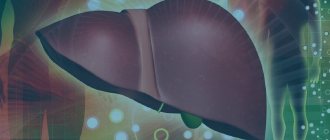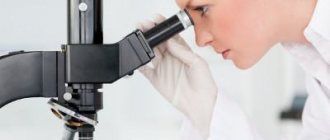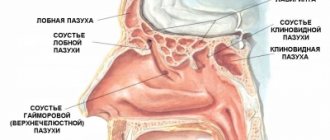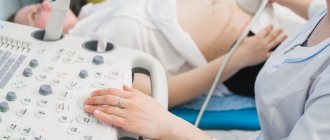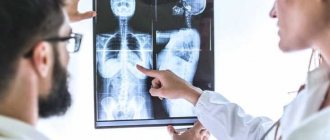Symptoms of mastitis
The disease is distinguished by its clinical form. Highlight:
- serous;
- infiltrative;
- abscess;
- phlegmonous;
- gangrenous;
- chronic infiltrative mastitis.
The clinical picture depends on the form of mastitis.
Manifestations in the serous form
In the serous form, general weakness, chills, and a rise in body temperature to 37.5-38 degrees are observed. The mammary gland is enlarged, tense, palpation causes severe pain.
Manifestations in the infiltrative form
Infiltrative form: upon palpation in a tense enlarged mammary gland, one or more infiltrates are determined. Body temperature remains elevated to 38-38.5 degrees. A general blood test revealed leukocytosis.
Manifestation in abscess form
With the abscess form, signs of intoxication intensify, the intensity of pain in the mammary gland increases, and in the area of infiltrates of the mammary gland, foci of fluctuation appear in the center. Body temperature – up to 39 degrees. In the general blood test there is an increase in leukocytosis and ESR.
Manifestations in phlegmonous form
In the phlegmonous form, severe intoxication, severe swelling, and hyperemia of the mammary gland are observed; multiple infiltrates with foci of fluctuation are palpated in its parenchyma. A general blood test revealed pronounced leukocytosis and ESR.
Manifestations in gangrenous form
In the gangrenous form, the condition is extremely serious and sepsis develops.
Symptoms of chronic infiltrative mastitis
Chronic infiltrative mastitis occurs without intoxication, local inflammation of the mammary gland is determined.
Prevention of lactation mastitis in the postpartum period
We bring to your attention a video with useful tips for preventing mastitis.
Measures to prevent the development of the inflammatory process in the mammary glands are planned and carried out in the prenatal period, during and after childbirth.
During the prenatal period, complications of pregnancy are eliminated, which can reduce the resistance of the female body to the action of pathogens. These complications are identified during routine visits to the gynecologist. The doctor will also take care of the timely sanitation of chronic foci of infection - carious teeth, chronically inflamed tonsils, old inflammations in the urinary tract, etc.
Special preparation of the breasts and nipples for breastfeeding is needed only when the nipples are flat and the areola is tight and not stretchable.
To determine the shape of the nipple, place it between your thumb and forefinger and squeeze lightly. The convex nipple will look forward, and the flat or inverted nipple will “hide” between the fingers. In such cases, nipple massage is used. You can do this massage yourself at home, but only after your doctor approves this procedure, because exposure to the nipples can cause contractions of the uterine muscles. To massage, you need to grab the nipple between two fingers and gently pull it out, slightly twisting it or rolling it between your fingers. The procedure should last no more than one minute.
Immediately after giving birth, follow the rules for preventing postpartum mastitis every day:
- To prevent stagnation of milk (lactostasis), feed the baby “on demand” and without time limits, do not allow feeding in the same position, make sure that the baby grasps the nipple correctly, etc. You can read a full description of the necessary actions in the article “Symptoms and treatment of lactostasis.”
- Periodically conduct preventive courses of phonation using the Vitafon device. This procedure completely prevents the retention of milk in the outflow tract and increases the activity of immune antimicrobial defense in the breast tissue.
- Immediately after birth, throughout the entire lactation period, after each feeding, apply a thin layer to the nipples and lightly rub in Bepanten cream. It is used during lactation for the prevention and treatment of cracks and redness of the nipples.
- Breast hygiene also affects the appearance of cracks. There is no need to wash, let alone soap, your breasts and nipples before and after each feeding. This washes away the protective layer of oils, dries out the skin and can lead to cracks. It is enough to take a shower 2 times a day.
- Make sure you are properly latched to the breast:
- During feeding, it should be comfortable for both you and the baby.
- The nipple is in the baby's mouth and the lower lip should be slightly turned outward.
- If you need to interrupt feeding (you are in pain, or the baby has not latched onto the breast correctly), then you should not pull out the baby’s nipple, but carefully “screw” your little finger into the baby’s mouth. This creates a space through which the nipple can be removed. While you are doing this, make sure once again how much grip the kids have! If you remove the breast incorrectly, this can also lead to cracked nipples.
- Buy special nipple covers that are worn under a bra - milk will accumulate in the cover, infection will not penetrate the glands, and the nipple will be reliably protected from mechanical damage.
- Use bras one size larger than necessary. They should be pitted and foam-free. This is necessary in order to prevent compression of the chest, irritation and microtrauma of the skin (prevention of cracks).
Conclusion
The main goal is to maintain breastfeeding and restore lactation at any cost!
Effective treatment of serous mastitis in women must be timely and comprehensive. To do this, physiotherapeutic procedures (phonation using the Vitafon apparatus) must be combined with frequent pumping and breastfeeding must not be stopped.
Preventive measures are carried out throughout the entire period of lactation. This will help prevent stagnation of milk and the penetration of pathogens into the milk ducts of the breast. In addition, procedures with the Vitafon device will strengthen the immune defense and ensure the destruction of the pathogen if infection does occur.
List of used literature
- Ailamazyan E.K. Obstetrics: textbook. – Moscow State Medical University named after. THEM. Sechenov. – 9th edition, revised and expanded – Moscow: GOETAR-Media. – 2015
- Obstetrics: national guidelines / Edited by E.K. Ailamazyan, V.I. Kulakova, V.E. Radzinsky, G.M. Savelyeva. – Moscow: GOETAR-Media, 2009
- Bisenkov L.N. Thoracic surgery. Guide for doctors. - St. Petersburg: Hippocrates, 2004.
- Gynecology. National leadership / Edited by V.I. Kulakova, G.M. Savelyeva, I.B. Manukhina. – GEOTAR-Media. – 2009
- Clinical surgery. National leadership in 3 volumes / Edited by A.I. Kirienko, V.S. Savelyeva. – GEOTAR-Media. – 2008 – vol. 2.
- Yakovlev Y. Ya., Manerov F. K. Lactostasis and lactation mastitis in pediatric practice / Siberian Medical Review - 2015 - No. 2 (92) - p. 32-41.
- Feedback from the Research Institute of Obstetrics and Gynecology named after. BEFORE. OTTA dated December 16, 1997 No. 218 on the use of the Vitafon vibroacoustic device in the treatment of lactostasis and serous mastitis.
Author of the article: Candidate of Medical Sciences, doctor of clinical laboratory diagnostics Ionicheva L.V. (Penza)
You can ask questions (below) on the topic of the article and we will try to answer them competently!
Treatment methods for mastitis
Treatment is prescribed depending on the form of the disease.
Prevention will help reduce the likelihood of mastitis, including increasing immunity, proper hygiene of the mammary glands during breastfeeding, breastfeeding with mandatory pumping of the mammary glands, and medical examination of women before pregnancy.
For serous form
For the serous form, conservative therapy is used (expressing the mammary glands, local antiseptics, perhaps the use of physiotherapy - UHF, ultrasound).
With infiltrative form
In the infiltrative form, antibiotics are prescribed orally, as well as locally - in the form of novocaine blockades with antibiotics.
With abscess and phlegmonous form
In case of abscess and phlegmonous form, only surgical treatment in a hospital setting is possible.
In gangrenous form
In the case of gangrenous form, the only way out is amputation of the mammary gland.
Make an appointment Do not self-medicate. Contact our specialists who will correctly diagnose and prescribe treatment.
Rate how useful the material was
thank you for rating
Staphylococcus aureus
The main causative agent of lactational mastitis is Staphylococcus aureus (up to 90% of cases), which is characterized by high virulence and resistance to many antibacterial drugs. Other microorganisms (staphylococcus epidermidis, streptococci, enterobacteria, fungi) are much less likely to cause inflammation in the lactating mammary gland.
The main source of infection for the mother is the oral cavity and nasopharynx of the newborn. Milk is often contaminated with the above microorganisms, but their number does not exceed 104/ml. About 80% of breastfed babies can have Staphylococcus aureus in their mouths one week after birth. However, this fact alone is not enough for the development of an inflammatory process in the breast tissue.
Features of the morphological structure of the mammary glands (the presence of a large number of lobules, a rich blood supply, the presence of adipose tissue, a large volume of cavities, an extensive network of milk ducts and lymphatic vessels) contribute to the rapid spread of inflammation involving a large area of tissue in the pathological process.
Nipple injuries are the main entry point for bacteria. Spread of infection through the milk ducts, hematogenously (blood flow) and lymphogenously (lymph flow) from foci of chronic infection occurs much less frequently.
In most cases, the main trigger for the development of inflammation in the mammary gland is milk stagnation.
Blockage of the milk ducts of individual lobes of the mammary gland leads to impaired outflow and stagnation of milk, stretching of the acini (secretory parts of the gland) and the development of inflammation in the presence of an infectious agent. Microorganisms contribute to the curdling of stagnant milk, which entails the development of swelling of the walls of the mammary ducts of the gland, contributing to even greater stagnation of milk. Penetrating from the lumen of the gland ducts into the tissue, microorganisms cause an inflammatory process - mastitis.
Complications
The most serious complications of lactation mastitis are infectious-toxic shock and sepsis, which often develop against the background of purulent forms of breast inflammation. In severe clinical cases, the infection spreads throughout the body with the involvement of other organs (lungs, kidneys, endocardium), cardiac dysfunction, renal failure, severe microcirculatory disorders, and coma. A complication of surgical treatment can be wound suppuration in the postoperative period, which in the future sometimes leads to cicatricial deformation of the breast and the formation of a milk fistula. Long-term consequences of mastitis include breast calcifications and an increased risk of neogenesis.
Prognosis and prevention
With adequate timely treatment, the prognosis is favorable. According to experts in the field of mammology, currently purulent-necrotic forms of lactation mastitis are extremely rare, the number of complications of the disease has decreased from 10-12% to 1.5-2.0%. An important role in the prevention of mastitis is played by prenatal preparation of a pregnant woman with the identification and sanitation of foci of chronic infection, compliance with the requirements of the sanitary and hygienic regime in obstetric hospitals, and regular medical examinations of personnel to identify carriers of hospital infections. After childbirth, it is necessary to follow the rules and techniques of breastfeeding and care for the skin of the areolar zone.
LiveJournal
Diagnostics
The connection of the disease with the lactation period and the typical clinical picture simplify the diagnosis of postpartum mastitis. However, nowadays there is a tendency towards an increase in the number of late, subclinical, erased forms of pathology with mild manifestations or the absence of some symptoms. Therefore, the role of laboratory and instrumental research methods is increasing, the most informative of which are:
- General blood analysis . The study reveals changes characteristic of an acute inflammatory process: an increase in ESR, the number of leukocytes, especially neutrophils with the appearance of their toxic granularity, a shift in the leukocyte formula to the left.
- Ultrasound of the mammary glands . Inflammatory infiltration of tissues is indicated by a decrease in their echogenicity. Dilation of the ducts is noted. The method allows you to identify accumulations of pus that look like hypoechoic formations, assess their quantity and location.
- Bacteriological analysis of milk . During the study, the type of pathogen, the number of microbial bodies in 1 ml, and the sensitivity of the pathogen to antibiotics are determined. Milk for analysis must be obtained from both mammary glands.
- Breast biopsy . Fine-needle aspiration biopsy of the lesion is usually prescribed in doubtful cases in differential diagnosis with other processes. The procedure is often performed under ultrasound guidance.
The serous form of lactation mastitis is differentiated from ordinary lactostasis, which is also characterized by a pyrogenic reaction. If the clinical picture is erased, suppuration of the cyst, atheroma due to breastfeeding, and the onset of mastitis-like cancer are excluded. In complex diagnostic cases, mammography, CT, MRI, and electrical impedance mammography are additionally performed. Taking into account the peculiarities of the clinical picture, if necessary, an infectious diseases specialist, oncologist, and anesthesiologist-resuscitator are involved in the examination.
